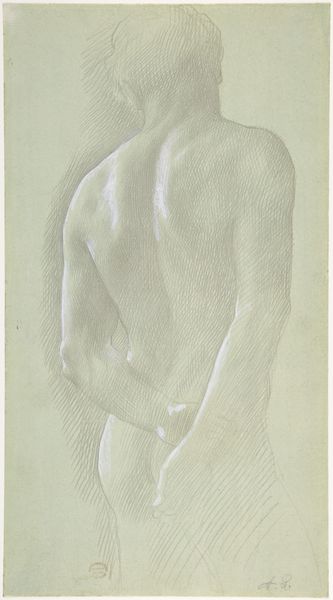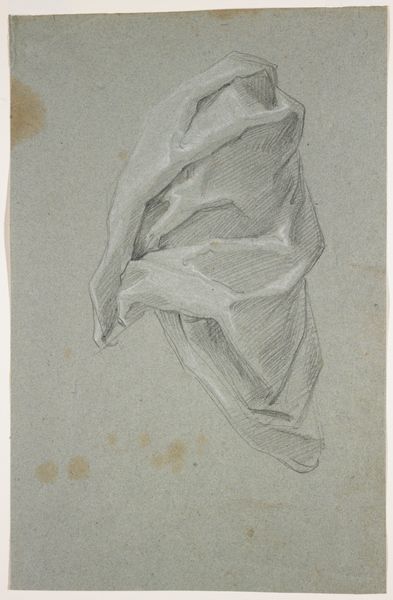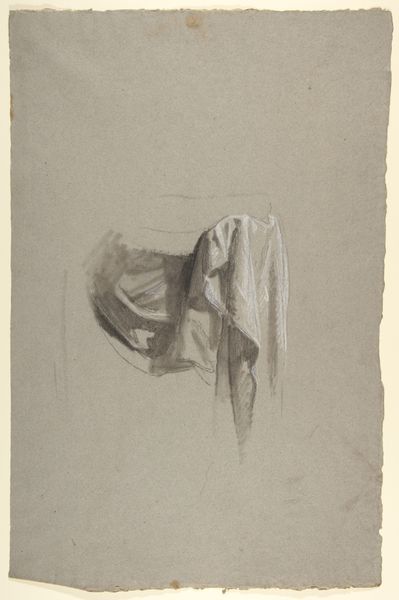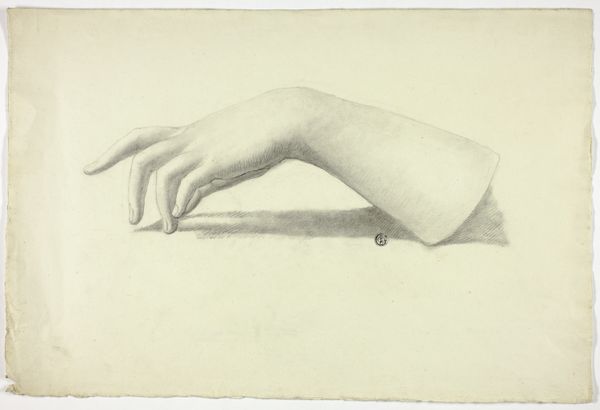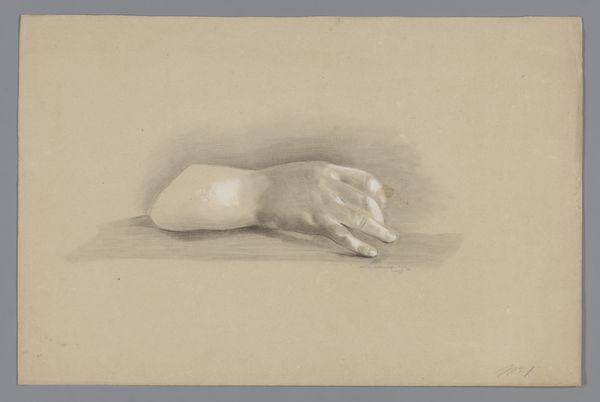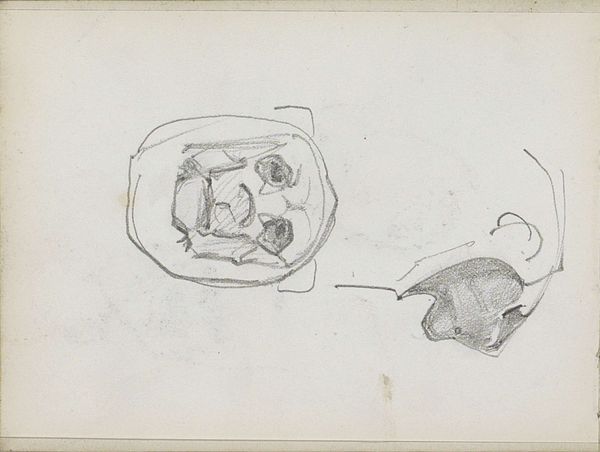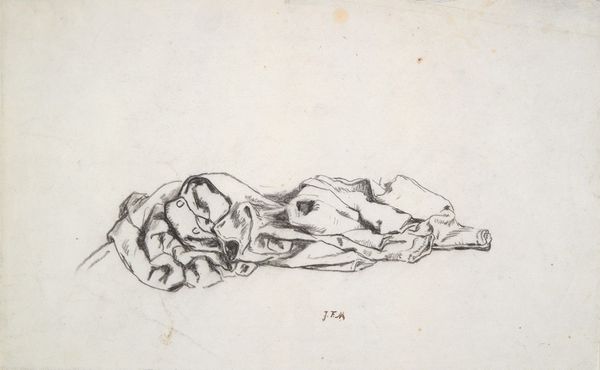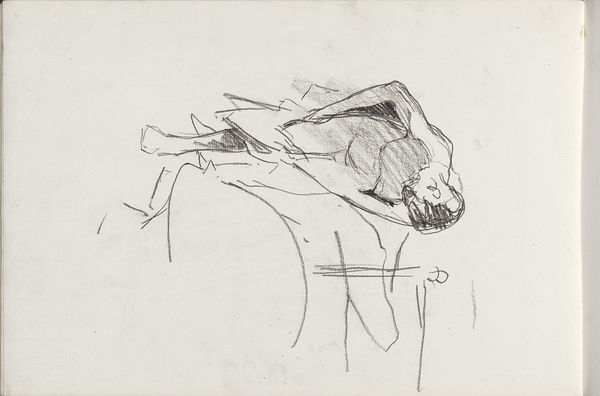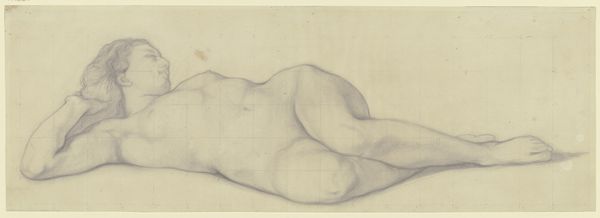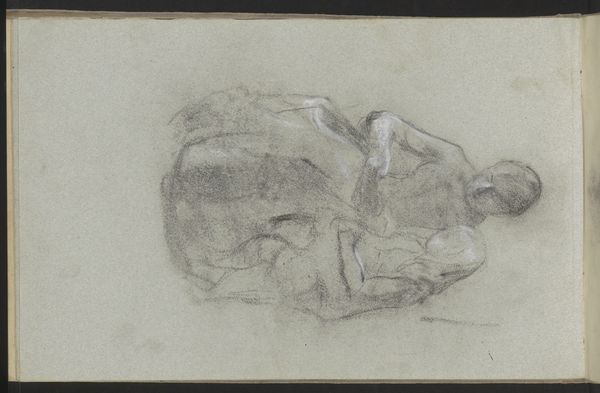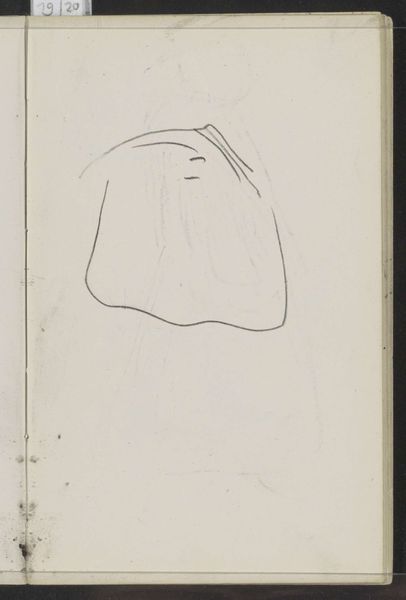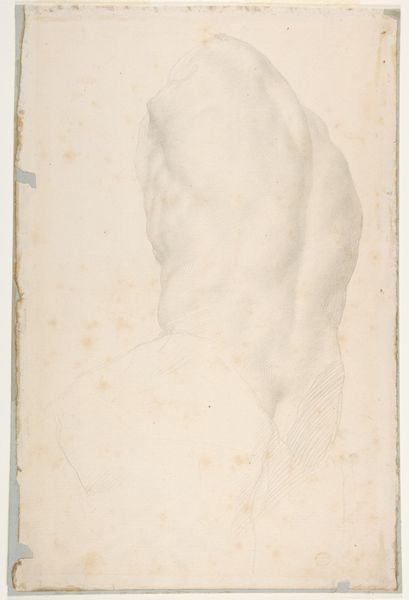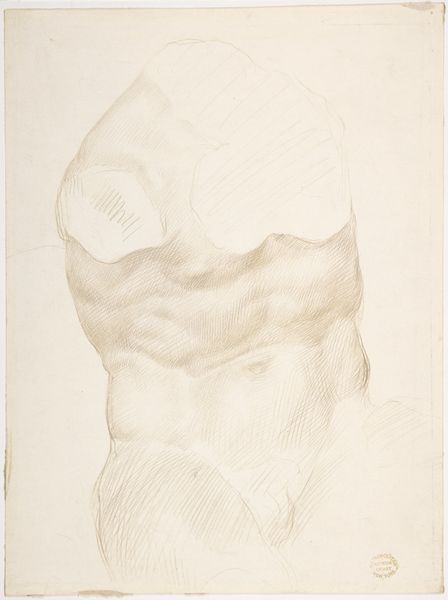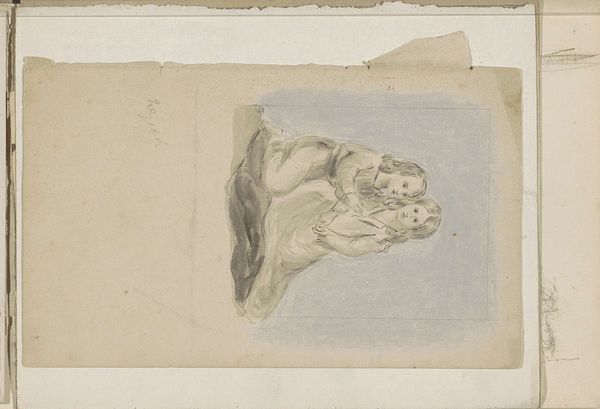
Dimensions: Height: 4 in. (10.2 cm)
Copyright: Public Domain
Curator: Auguste Rodin's marble sculpture, "Young Woman," created sometime between 1840 and 1912, really draws the eye, doesn’t it? Editor: Absolutely. My first impression is of intense introspection and perhaps a deep sadness. The pose is so self-contained. Curator: Indeed. Rodin, a key figure in modern sculpture, often challenged academic traditions. What strikes me here is how he captures the female form with such emotional intensity, characteristic of Romanticism, while pushing beyond its conventions. Editor: There's definitely a palpable tension there, a woman turned inward. I am drawn to considering how the absence of specific details in her face impacts its accessibility and speaks to the universal experiences of women through intersectional experiences like gender or race. Is she burdened, in contemplation, or simply exhausted? The viewer has room to project. Curator: That ambiguity, I believe, is deliberate. Rodin moved away from purely representational art; the lack of sharp details gives it an almost dreamlike quality. Remember, museums at the time were actively creating specific cultural and artistic norms and some artists directly reacted to it, either going along with it, or in direct conflict with these forces. Editor: Precisely. This makes one consider art's purpose: Does it show us exactly what to see, or prompt questions about how identity and historical moment shapes experience? And speaking to identity, is this intended for the male gaze, and how does the artistic creation reflect those biases? Curator: Considering the period, it's hard to completely remove the idea of the male gaze and to be a completely feminist artwork, especially due to the power structures at the time. Rodin’s work exists in a complex dialogue with social expectations. Yet, pieces like this also opened doors, allowing for further expressions that are free of expectations and restraints in later pieces created by women artists themselves. Editor: A powerful point. It underlines the role of institutions like the Met here as the guardians and shapers of these narratives, influencing not only how we perceive the art itself but also the dialogues surrounding it. Ultimately, viewing artworks like this through the multiple lens of art history and cultural theory opens a deeper understanding of both the artwork and its context.
Comments
No comments
Be the first to comment and join the conversation on the ultimate creative platform.

